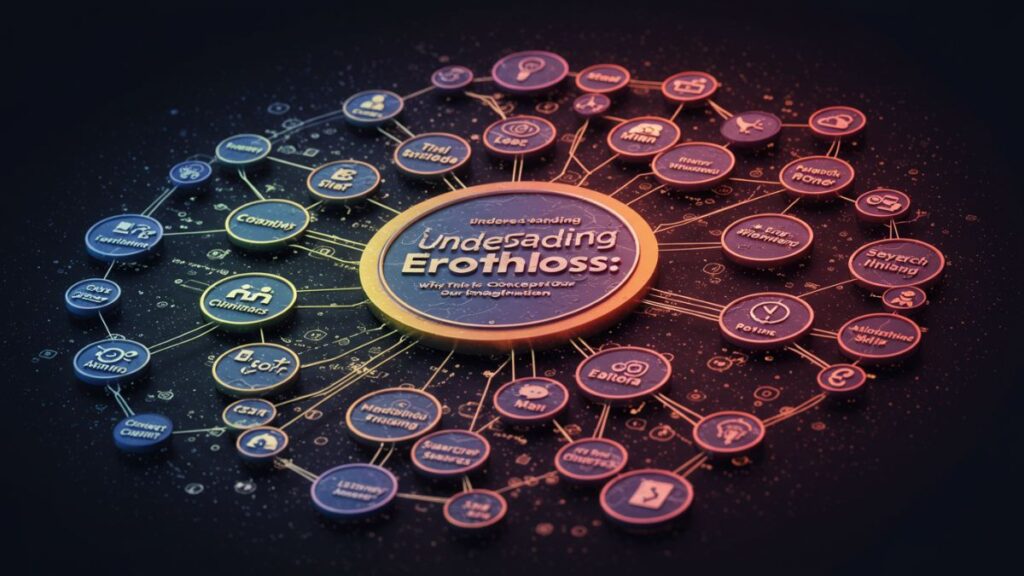Erothtos a term that has recently captured increasing interest—has a certain allure, sparking conversations across cultural, philosophical, and artistic domains. But what exactly is erothtos? Why is it earning such fascination and resonating deeply with audiences worldwide?
This blog dives into the origins, interpretations, and applications of erothtoss to understand why it grips our imaginations. By the end, not only will you have a deeper appreciation of the concept, but you’ll also gain insights into how it contributes to our human experience.
What Is Erothtos?
Erothtos is more than just a single idea or phrase—it’s a way of thinking, an emotional undertone rooted in exploration and connection. While its precise meaning can vary depending on context, erothtoss typically symbolizes a pursuit of something intangible, yet profoundly personal. Think of concepts like longing, curiosity, or the thirst for meaning, and you approach the essence of erothtoss.
The term itself intertwines emotional depth with intellectual pursuit, making it unique among abstract concepts. This duality—both cerebral and heartfelt—has led thinkers and creatives to adopt erothtoss as a lens for understanding life’s mysteries.
Origins of Erothtos
Though modern interest in erothtos has surged, its foundation isn’t new. Traces of the concept appear in ancient philosophy, where questions about desire, fulfillment, and the unknown continually surfaced. Erothtoss often emerged as a way of framing significant questions, offering individuals a perspective to grapple with their deepest uncertainties.
Over time, philosophical schools across various cultures began experimenting with ideas similar to erothtos, integrating them with religious teachings, artistic movements, and dialogues on human identity. Its contextual importance grew, morphing into what we discuss today as erothtoss.
Why Does Erothtos Enthrall Us?
A Search for Meaning
Above all, erothtos encapsulates humanity’s unquenchable quest for meaning in life. Whether we’re driven by existential questions (“Why are we here?”) or simpler reflective inquiries (“What brings me joy?”), erothtos sustains our focus on discovery and growth.
For example, consider art inspired by longing—a song about an absent lover or a painting capturing the memory of a fleeting moment. These creations often exude erothtoss by shining a light on the universal experience of yearning for “what could be.”
The Pull of the Unknown
Erothtos feeds curiosity, a crucial trait that defines us as humans. History reveals how ancient philosophers, explorers, and scientists reached forward because of this insatiable curiosity. Without erothtoss, advancements—both technological and emotional—risk stagnation, as it’s precisely the unknown that draws us toward novel ideas, people, and challenges.
A Deep Connection to Emotion
Think about when films, relationships, or stories leave you speechless. They often tap into something visceral—a sense that transcends rational understanding and permeates you emotionally. Erothtoss operates along similar dimensions, tying intricate emotions into compelling motivations.
How Erothtos Influences Art, Philosophy, and Daily Life
Erothtos in Art
From poetry to cinematography, erothtos plays an understated but integral role in artistic expression. Romanticism, particularly in 19th-century literature, explored how human emotion—restraint coupled with the untameable—could produce awe-inspiring musical compositions, novels, and visual masterpieces.
Even modern iterations of erothtoss appear in films or digital storytelling. Think of a movie that portrays unfulfilled love or an ad campaign that promises viewers the excitement of chasing dreams. Creators engineer erothtoss into these works deliberately, ensuring audiences don’t just consume—they feel.
Erothtos in Philosophy
Philosophical explorations often thrive on erothtos, particularly in discussions around purpose and responsibility. Philosophers such as Søren Kierkegaard sought to define the balance between acting in faith and coping with doubts about reality—a fitting backdrop to understanding erothtoss and its paradoxical pull between comfort and yearning.
Eastern philosophies, on the other hand, share an arguably similar theme under Buddhist or Taoist traditions where erothtoss becomes archetypal to understanding impermanence (a core tenet within universal teachings).
Erothtos in Our Modern Lifestyles
Perhaps unexpectedly, erothtos influences everyday life in countless ways. Whether guiding career aspirations, shaping relationships, or simply igniting personal hobbies/goals—eras of uncertainty inevitably heighten our reliance toward understanding “what truly matters.”
Conclusion
Erothtos, with its dynamic interplay of longing and fulfillment, serves as a profound lens through which we can explore the human condition. It reminds us of the delicate balance between attachment and impermanence, inspiring introspection about the forces that drive our choices and shape our lives. By acknowledging the presence of erothtoss in both ancient philosophies and modern routines, we gain a deeper appreciation for its timeless relevance, empowering us to live with greater authenticity and purpose in an ever-changing world.
FAQ’s
What is Erothtos?
Erothtos is a conceptual framework that embodies the interplay of longing and fulfillment, often tied to human desire, attachment, and the search for meaning. Rooted in both ancient philosophies and contemporary thought, it serves as a lens to explore the deeper aspects of the human condition.
How does Erothtos relate to the modern world?
Erothtos remains highly relevant in today’s fast-paced, interconnected world, where the tension between attachment and impermanence is deeply felt. It encourages individuals to reflect on their choices, values, and relationships, fostering a more authentic and grounded approach to life.


